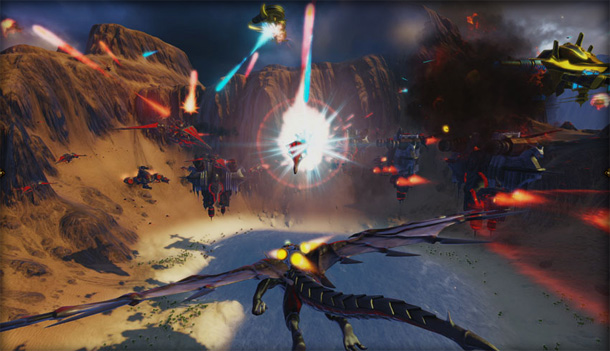
For a series that has been around for nearly a decade, the Divinity games from Larian Games have developed a serious, dedicated following. They’ve spanned across several devices, game types, and plot lines. The latest in the series, Dragon Commander, seems to push the property even further.
I had a hard time putting a finger on just how to best sum up the game, and could only come up with: it’s every game, ever.
Well, sans Mario, of course.
Dragon Commander takes parts and pieces from tactical strategy games, RPGs, tower defense third person action games, card battles, multiplayer matches and romance simulators, and mashes them all together into an experience that seems to work fairly well. Taking place before the first Divinity game, DC mixes steampunk styling with fantasy and technology. The dragons have jet packs for some reason, but we forgave it because THE DRAGONS HAVE JET PACKS.
The goal of the game is to take over the world and unite it under one banner, visualized via a tactical map. The game ostensibly plays like a multiplayer experience, as each of the 6 races is divided among 3 factions that perform actions during their turns. These actions can be attacks, alliance-forming, resource-building, and even marriage. Being turn-based, matches can last for two hours or ten, depending on how much back and forth takes place.
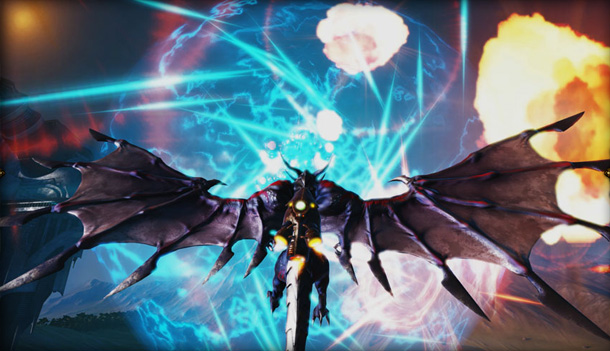
The majority of the action takes places in the third-person dragon flight view, which occurs when the map location is clicked. In this portion the players control their beast in as it attacks enemy forces, allowing for explosive fireballs and bullet-time dodging. The dragon can also “visit” the front lines and allow the player to micromanage his or her troops. The dragons are some of the most powerful units in the game, and should they die the player must wait some amount of time before another respawns. Even armed with several explosive weapons, the beasts can be taken down somewhat easily if the player isn’t utlizing them well.
This portion of the game relies on lush, vibrant visuals to portray all manner of lighting battle units and characters set against almost Martian landscapes. Here, the steampunk style mixes a bit of manga into it to make the dragons look more reptilian and the environment somewhat glossy.
The dragons can be used to “zoom into” a set of troops and units, for a traditional overhead RTS control method. This allows for group actions aimed at defeating the opposing faction. Players are asked to set up turrets and factories, with mining for resources taking place to feed the forces. It’s very traditional real-time strategy gaming. After the troops are set, the dragon takes off and can attack the other factions back in third person mode. It’s seemless, and looked natural.
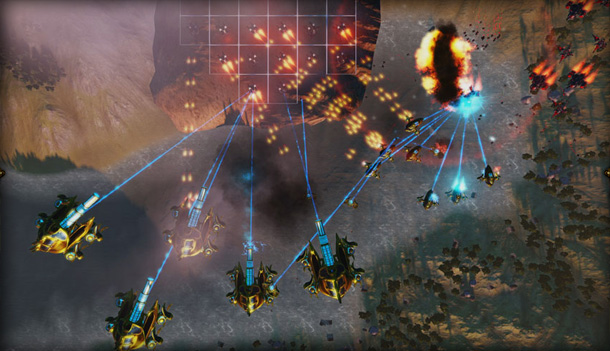
Once the battle in our demo was complete, the developer was taken to his home base, where the presentation shifted to a 2D planar planning area. In this mode, which had the feeling of a cross between Ace Attorney and Mass Effect‘s conversation system, the developer had to chose to bring the opponent under his alliance, or to utterly crush him. It’s during this portion that stat-boosting cards are earned, which can be played throughout the match for various effects. We were shown a massive array of flow charts on the wall behind us that displayed some of the possible conversations and potential outcomes and stats boosts based on situational outcomes. Bad decisions and alliances can haunt the players later on, we’re told.
There seems to be a lot of politicking that needs to take place in Dragon Commander, and the verbal work is as important as the action.
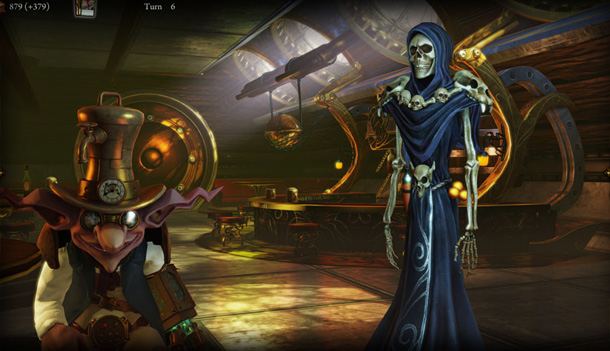
Another method of forging alliances, outside of subjugating enemies, is to marry the daughters of the kings and commanders of other factions. Though conversation that includes both romance and pleasing her nation, the women will remain pleased with the player, resulting in more positive effects and results. Marrying into one faction while allied with an opposing side can even spur war, as the developers told us that alliances can be broken just as easily as they are made through marriage.
It’s important to note that women tend to be treated like commodities in this game. During our demo, I did not see any males put up to marry, and the interaction between the player and his wife was scripted to show us specific results. Though, this could be due to the time constraint of our meeting with the team. It’s something to keep an eye on, if nothing more than its medieval treatment of females.
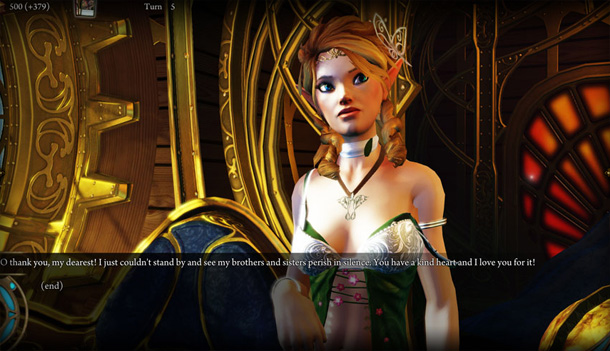
Dragon Commander seems like a complicated game, though underneath its excess is actually a fairly traditional kingdom-building RTS along the lines of RISK. The way that the different portions of kingdom-building are presented with enough variety from one other is going to be interesting to see which take precedence. I suspect that different players will lean more heavily to one mode or another, depending on their level of comfort within the genre mix.
Divinity: Dragon Commander is planned for an early 2013 release for PC.


1 Comment